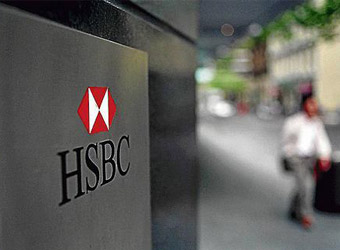A new app by HSBC will enable U.K. customers to view bank accounts they have with different providers, in a major step towards meeting new European Union rules.
The retail lender said Thursday it will introduce the HSBC Beta app from late October onward. It will initially be available to 10,000 HSBC customers.
As a beta product, it will still be in a stage of development; a full version to go on general release to the broader U.K. population is expected to arrive in early 2018.
The app will be heavily targeted at the “millennial” market and is designed to simplify the process of managing savings.
“Customers now bank at home, on the bus, at work and even in bed, but managing money is still too often a complex and complicated task,” Becky Moffat, head of personal banking at HSBC, said in a statement Thursday.
“Through our beta app we want to give our customers a complete and joined-up view of their financial life and make it easier for them to choose confidently, taking the hassle out of checking dozens of statements and manually calculating what’s left.”
Customers will be able to add current accounts, loans, mortgages and savings set up with other banks to get a bigger picture about how they are spending their money. This gives an “aggregated” view of how they are spending and where their income is coming from on all of these different accounts.
How it works
Customers can add accounts from up to 21 different banks, including Barclays, Lloyds and Bank of America. When a new account is added, login details for each account are tailored to that bank’s interface.
The app shows both assets and liabilities, allowing customers to view how much money is coming in and how much is going out.
HSBC said it has “simplified” language to enable customers to get a better understanding of how much debt they owe, different sources of income and how to better manage their finances.
Other features that allow customers to take control over their spending habits are set to be rolled out over the next few months.
One feature will show customers how much disposable income they have before their next payday. Customers add bills that they pay on a regular basis, and these are deducted from their current balance to show exactly how much money they have left across all their accounts.
Another, called ‘Spend Analysis’, would categorize different types of spending into categories such as shopping and utilities.
EU regulation to shake up ‘moribund’ bank sector
An incoming EU law will mean that banks are forced to open up their data to third-party firms.
The shake-up is expected to encourage a phenomenon known as “open banking.” The aim of open banking is to help rising stars in the financial world — particularly those in the financial technology (fintech) sector — compete with established banks.
“This app speaks to what is happening in banking right now. The (European) regulator is shaking up what they see to be a very moribund banking sector,” Raman Bhatia, head of digital at HSBC in the U.K. and Europe, said at a private viewing ahead of the announcement.
But Bhatia said he doesn’t view banking as an industry in terminal decline.
“I don’t see it that way, I see it as utterly vibrant with all sorts of fintech players, whether online or full-service digital challenger banks, trying to make our customers’ lives easier. And we are in that mix.”
The bank has spent $2 billion globally to work on its digital banking platform, Bhatia said.
Features on the bank’s new beta stage product are similar to those already provided by smaller, digital-only retail lenders known as ‘challenger banks’.
One such challenger, Starling Bank, recently launched its Marketplace, a product that allows other fintech vendors to offer their services within the bank’s app.
HSBC Beta will only be available to U.K. customers initially, but Bhatia said the lender aims to take what it learns from the app’s beta stage of development overseas in the long-term.
“We are an international bank, and that is a unique strength of ours,” he said.
“PSD2 is European, we have a European base, so clearly the learnings we have from the U.K. will travel well overseas, immediately in Europe. But rest assured, open banking as an idea is being embraced by regulators across the world.”
The EU’s Revised Payment Service Directive (PSD2) will give third party non-banking firms the ability to perform payment services for banking customers and access their data. PSD2 comes into effect on January 13, 2018.
And the U.K.’s Competitive Markets Authority has also set out plans to enable smaller challenger banks to compete with large lenders. The CMA’s measures seek to enable customers to share their data with other banks and third parties, with the long-term aim of allowing them to access their financial accounts through one single app.
Source: CNBC



